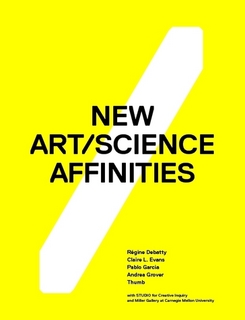Book of Peer Production: Special FSCONS Edition (2014)
Filed under book | Tags: · 3d printing, commons, hacker culture, hackerspace, maker culture, networks, p2p, peer production, politics, production, technology

“This edited volume is a special edition of Journal of Peer Production. It consists of papers written by presenters at the Peer Production-track at the Free Society Conference and Nordic Summit (FSCONS), Göteborg 2014. In their different ways, the authors bear witness to foregone and forgotten traditions of utopian technology development, providing the background of present-day initiatives to build a better future from bottom-up.”
Edited by Johan Söderberg and Maxigas
Publisher NSU Press, Aarhus, November 2014
All the content in this book is in the public domain
ISBN 9788787564830
56 pages
Journal of Peer Production, 5: Shared Machine Shops (2014)
Filed under journal | Tags: · activism, digital fabrication, fab lab, hacker culture, hackerspace, knowledge, maker culture, peer production, sharing, technology
 |
“Despite the marketing clangour of the “maker movement”, shared machine shops are currently “fringe phenomena” since they play a minor role in the production of wealth, knowledge, political consensus and the social organisation of life. Interestingly, however, they also prominently share the core transformations experienced in contemporary capitalism. The convergence of work, labour and other aspects of life — the rapid development of algorithmically driven technical systems and their intensifying role in social organisation — the practical and legitimation crisis of institutions, echoed by renewed attempts at self-organisation.
Each article in this special issue addresses a received truth which circulates unreflected amongst both academics analysing these phenomena and practitioners engaged in the respective scenes. Questioning such myths based on empirical research founded on a rigorous theoretical framework is what a journal such as the Journal of Peer Production can contribute to both academic and activist discourses. Shared machine shops have been around for at least a decade or so, which makes for a good time to evaluate how they live up to their self-professed social missions.”
Edited by Maxigas and Peter Troxler
Published in October 2014
Open Access
ISSN 2213-5316
View online (PDF and HTML articles)
Comment (0)Grover, Debatty, Evans, Garcia, Thumb: New Art/Science Affinites (2011)
Filed under sprint book | Tags: · art, bio art, biotechnology, hacking, maker culture, media art, programming, science, subversion, technology

The Miller Gallery at Carnegie Mellon University and the STUDIO for Creative Inquiry have co-published “New Art/Science Affinities,” a 190-page book on contemporary artists that was written and designed in one week by four authors (Andrea Grover, Régine Debatty, Claire Evans and Pablo Garcia) and two designers (Luke Bulman and Jessica Young of Thumb).
“New Art/Science Affinities,” which focuses on artists working at the intersection of art, science and technology, was produced by a collaborative authoring process known as a “book sprint.” Derived from “code sprinting,” a method in which software developers gather in a single room to work intensely on an open source project for a certain period of time, the term book sprint describes the quick, collective writing of a topical book.
The book includes meditations, interviews, diagrams, letters and manifestos on maker culture, hacking, artist research, distributed creativity, and technological and speculative design. Chapters include Program Art or Be Programmed, Subvert! Citizen Science, Artists in White Coats and Latex Gloves, The Maker Moment and The Overview Effect.
Sixty international artists and art collaboratives are featured, including Agnes Meyer-Brandis, Atelier Van Lieshout, Brandon Ballengée, Free Art and Technology (F.A.T.), Rafael Lozano-Hemmer, The Institute for Figuring, Aaron Koblin, Machine Project, Openframeworks, C.E.B. Reas, Philip Ross, Tomás Saraceno, SymbioticA, Jer Thorp, and Marius Watz.
The authors collectively wrote and designed the book during seven, 10-14 hour-days in February 2011 at the STUDIO for Creative Inquiry. During their sessions they held conversations with CMU faculty, staff and students from the STUDIO, Miller Gallery, College of Fine Arts, Robotics Institute, Machine Learning Department and BXA Intercollege Degree Program.
“The book sprint method was adopted in order to understand this very moment in art, science and technology hybrid practices, and to mirror the ways Internet culture and networked communication have accelerated creative collaborations, expanded methodologies, and given artists greater agency to work fluidly across disciplines,” says lead author Andrea Grover.
The publication is part of Grover’s Andy Warhol Foundation for the Visual Arts Curatorial Research Fellowship at CMU’s STUDIO for Creative Inquiry and Miller Gallery. “Intimate Science,” an exhibition that will be the product of Grover’s research, will take place in early 2012 at the Miller Gallery.
Published by Miller Gallery at Carnegie Mellon University + CMU STUDIO for Creative Inquiry, October 2011
ISBN 0977205347
190 pages
Licensed under Creative Commons Attribution-NonCommercial-NoDerivs 3.0 License
commentary (We-Make-Money-Not-Art.com)
authors

